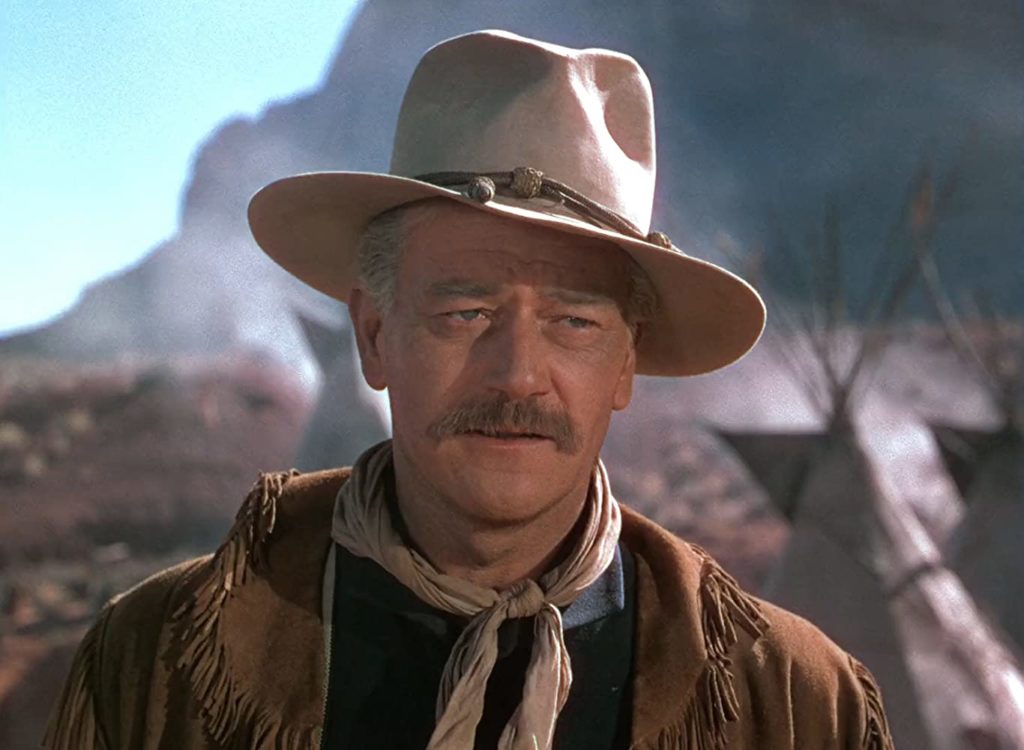To discover more excellent reads and cinema selections, don’t miss our Isolation Bookshelf collection.
In my recent column on the great cinematic year of 1939, I mentioned the director John Ford among the others who made notable films that year. Ford directed three films released in 1939: Drums Along the Mohawk, Young Mr. Lincoln, and Stagecoach. Each of those movies was a pure slice of Americana, a contribution to our country’s mythology—from the American Revolution, to the early life of its greatest statesman, to the cowboys of the wild West.
Mythology, properly understood, is not a pack of lies about a culture, or even a sugarcoating of the truth about it. It involves the enhancement and emphasis of certain features of a society’s life—and yes, sometimes the suppression of other features—in order to probe what the storyteller believes is the essence of its shared experiences, its real heart. And even if one’s object is to tell a patriotic myth, one need not paper over the uglier features, the vices and crimes of one’s country, in the story one tells. But as a famous line put it in one of his late films, “When the legend becomes fact, print the legend.” (Print the Legend became the title of two books on Ford, a fine 1999 biography by Scott Eyman, and a 2009 collection of essays on his films edited by Sidney A. Pearson, Jr., to which my wife and I contributed.)
In this sense, John Ford was perhaps our greatest cinematic mythologist; his only rival among his contemporaries in this respect was Frank Capra. Ford is remembered today most of all for his westerns. In addition to Stagecoach, it’s pretty hard to beat My Darling Clementine (1946; the best version of the “gunfight at the OK Corral” story), 3 Godfathers (1948), the “cavalry trilogy” of Fort Apache (1948), She Wore a Yellow Ribbon (1949), and Rio Grande (1950), not to mention The Searchers (1956) and The Man Who Shot Liberty Valance (1962). All but one of these films starred John Wayne, and it’s fair to say that it was Ford who made Wayne a superstar. Together, Ford and Wayne created the image of the western hero that endures in the American imagination. That hero is tough, laconic, principled, and duty-bound unto death but governed by a code that does not always coincide with the law. He is loyal to friends but capable of getting along with very few of them, gallant to women but no fool for them, and capable of lethal violence for the sake of any of these loves that govern his heart. Surely that is a portrait of the mythological American male as many of our countrymen like to imagine themselves—or as they aspire to be.
Start your day with Public Discourse
Sign up and get our daily essays sent straight to your inbox.John Ford made some of the best westerns ever filmed, but he was not a one-trick pony. In his long career from the silent era to the 1960s, Ford made just about everything but musicals, including dramas, the occasional comedy (see The Whole Town’s Talking, 1935), war pictures (see The Lost Patrol, 1934), and adaptations of notable novels and plays (see The Grapes of Wrath, 1940). And during the Second World War, when he joined the navy, Ford made some of the most accomplished documentaries ever produced, winning two Oscars in that category. His feature films were nominated for the Oscar for best picture four times and won once (for the elegiac story of Welsh coal miners, How Green Was My Valley, 1941). Ford himself was nominated for best director five times, winning the Oscar four times—still a record for the director’s award.
After returning from his naval service, Ford’s next feature film was the grim, unsparing, but altogether heroic tale of the men of a PT boat squadron fighting desperately at the beginning of the war to delay the inevitable fall of the Philippines. Based on a bestselling book by a veteran of that campaign, the film’s title said it all: They Were Expendable (1946). Ford had been an eyewitness to the Battle of Midway, and he sugarcoated nothing in this film, which endures today as one of the best war pictures of this or any other period.
Ford’s mythologizing did not make him shy away from American problems like racism, as a viewing of The Searchers will demonstrate. He could tackle it head on in films like Sergeant Rutledge (1960), about a black cavalryman charged with the rape and murder of a white girl, and Cheyenne Autumn (1964), which depicted the government’s callous treatment of Native Americans. But recognition of such evils never meant that Ford’s love of country was shaken in the least.
If there was a country Ford loved almost as much as America, it was Ireland, the land his parents came from. Irishmen or Irish-Americans frequently figure in his films set in America, as in the cavalry films, in his paean to West Point, The Long Gray Line, and in his adaptation of Edwin O’Connor’s novel The Last Hurrah. Two of his films set in Ireland itself are particularly worthy of notice, though they could hardly be more different from one another: The Informer (1935), a dark tale that won Ford his first Oscar as best director, and the romantic Irish picture-postcard The Quiet Man (1952), which won him his fourth and final Oscar.
Ford himself was almost a stereotypical Irishman, a boozer with a mean streak who could be cruel to his actors, many of whom (but by no means all!) came to love him nonetheless for his ability to get their best from them. He had an ego as large and imposing as Monument Valley, the Utah-Arizona border setting for many of his westerns. But as he amply demonstrated in his wartime service, he had no lack of physical courage, and during a Screen Directors Guild debate in 1950 over the imposition of an anti-Communist loyalty oath on guild members, Ford—whose patriotism was undoubted—faced down Cecil B. DeMille to defeat the requirement.
John Ford’s America is a good deal like Ford himself—loud, brawling, and hard-charging. Ford’s Americans are also honorable, self-sacrificing, and faithful to their promises. That’s not the whole truth about America, not by a long shot. But it’s true enough that in John Ford’s films, we will forever see something of ourselves.














